The Therapeutic Benefits of Pottery: Art Therapy
Have you ever felt the urge to create something with your hands, to mold and shape a piece of clay into something beautiful? If so, you’re not alone. Pottery isn’t just a fun pastime; it’s a powerful form of art therapy that can lead to profound psychological, emotional, and social benefits. In this article, we will explore how engaging in pottery can serve as a therapeutic outlet, helping individuals navigate their inner worlds while fostering creativity and self-expression. Whether you're a seasoned potter or a curious beginner, the act of working with clay can open doors to healing and transformation.
Art therapy is a fascinating blend of artistic expression and psychological support, allowing individuals to delve into their emotions and experiences in a safe environment. When it comes to pottery, the medium itself becomes a canvas for self-discovery. The tactile nature of clay invites participants to engage their senses, creating a unique experience that transcends verbal communication. Through the act of shaping and molding, individuals can uncover hidden feelings and express them in ways that words often fail to capture.
Engaging in pottery can be a remarkable way to alleviate stress and anxiety. The simple act of kneading and shaping clay can promote a state of mindfulness and relaxation, offering a much-needed escape from the chaos of daily life. As you immerse yourself in the process, you might find that your worries begin to fade away, replaced by a sense of calm. The tactile nature of clay, combined with the rhythmic motions involved in pottery, can provide a soothing effect, making it an excellent tool for emotional processing and mental well-being.
Creating pottery is more than just a creative endeavor; it’s an opportunity to boost your self-esteem. Each time you successfully shape a piece, you experience a tangible sense of accomplishment. This feeling of achievement can significantly enhance your confidence, encouraging personal growth and exploration. Imagine walking into a room filled with your own creations, each piece a testament to your skills and creativity. It’s a powerful reminder that you are capable of bringing something beautiful into existence.
In the world of pottery, perfection is not the goal. Instead, the medium encourages you to embrace imperfections and celebrate the uniqueness of each creation. This shift in mindset can lead to reduced anxiety and a more enjoyable creative process. When you allow yourself to make mistakes, you open the door to experimentation and discovery. It’s a liberating experience that can translate into other areas of life, helping you to let go of unrealistic expectations and find joy in the journey.
Working with clay teaches invaluable lessons in patience and perseverance. The process of creating pottery is rarely linear; it involves trial and error, moments of frustration, and ultimately, triumph. This resilience is not just a skill for the pottery wheel; it can enhance your emotional strength in everyday life. As you learn to navigate the challenges of shaping clay, you also develop the tools to tackle obstacles in your personal and professional life.
Pottery classes and workshops offer more than just a chance to create; they provide a platform for social interaction. Engaging with others in a creative setting fosters relationships and builds support networks. These connections can significantly contribute to emotional well-being, creating a sense of belonging that is so crucial in our fast-paced world. Imagine sharing your experiences, laughter, and even frustrations with fellow potters, all while creating something beautiful together.
Pottery isn’t just a mental and emotional workout; it’s also a physical one. The various activities involved in shaping clay promote fine motor skills and hand-eye coordination. As you manipulate the clay, you improve your dexterity and strengthen your muscles. It’s a hands-on approach that keeps you engaged and active, making it an excellent addition to any wellness routine.
The act of shaping clay can be a form of moving meditation. As you focus on the feel of the material in your hands, you become more present in the moment. This mindfulness practice can enhance mental clarity and help reduce negative thought patterns. It’s a beautiful way to reconnect with yourself and find peace amidst the noise of daily life.
Different pottery techniques, such as wheel throwing and hand-building, can be tailored to fit individual needs. Each method offers diverse ways to express emotions and explore creativity. Whether you prefer the precision of the wheel or the freedom of hand-building, pottery provides a versatile outlet for artistic expression.
Incorporating pottery into therapeutic practices can enhance traditional psychotherapy. This integration allows therapists to address emotional issues while facilitating creative expression through clay manipulation. By combining the therapeutic benefits of art with psychological support, individuals can embark on a healing journey that nurtures both the mind and spirit.
- What are the main benefits of pottery as art therapy?
Pottery offers numerous benefits, including stress reduction, enhanced self-esteem, improved social connections, and physical dexterity. - Do I need prior experience to participate in pottery therapy?
No, pottery therapy is designed for all skill levels, from beginners to experienced artists. - How can pottery help with emotional healing?
The process of creating pottery allows individuals to express emotions that may be difficult to articulate verbally, facilitating emotional release and healing.
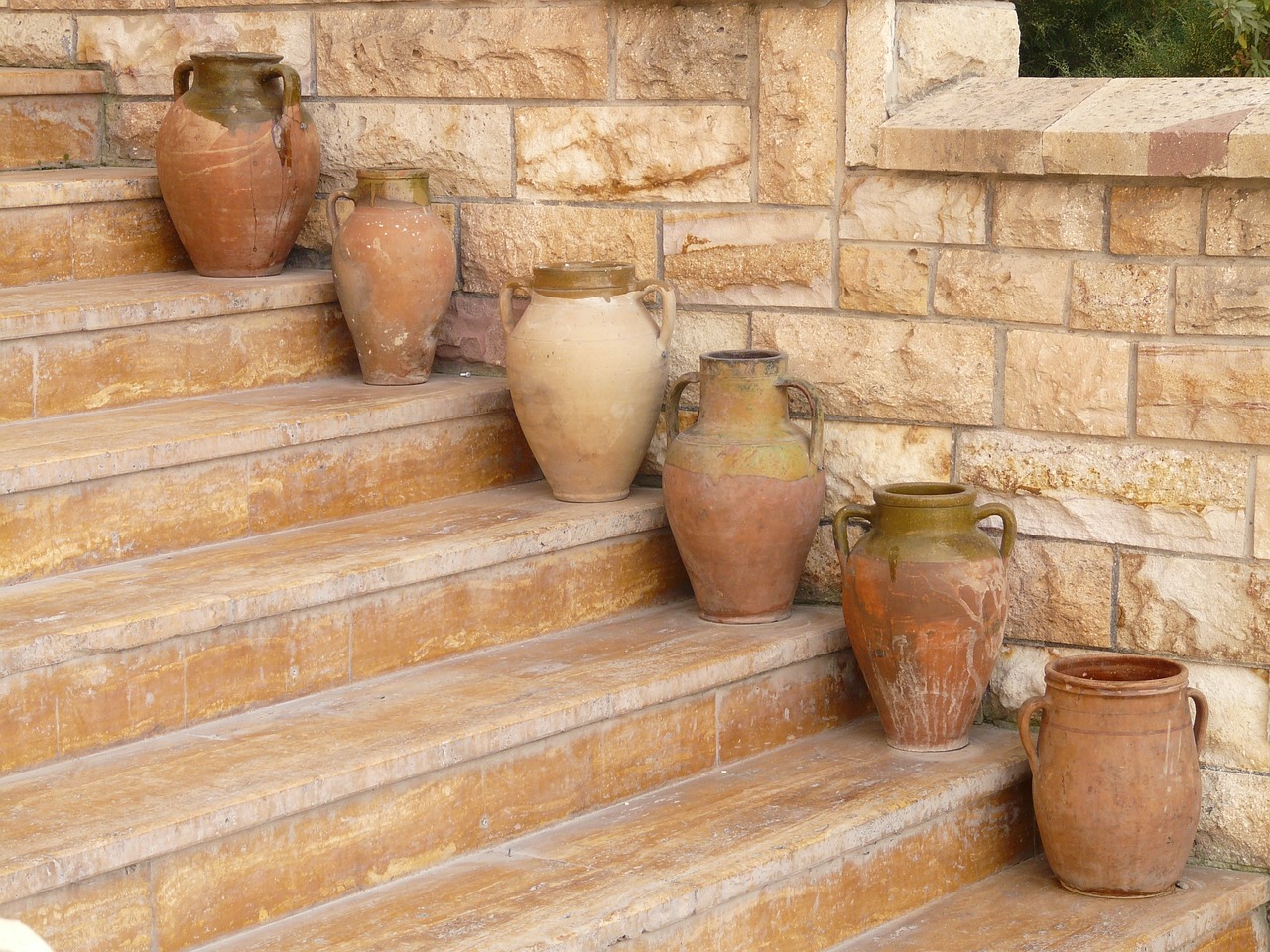
Understanding Art Therapy
Art therapy is an innovative therapeutic approach that merges the world of creativity with psychological healing. It provides a unique avenue for individuals to explore their emotions, thoughts, and experiences through various artistic mediums. One of the most engaging forms of art therapy is pottery, which allows participants to physically manipulate clay, creating a direct connection between their feelings and the art they produce. This tactile interaction not only engages the senses but also encourages self-expression in a way that words sometimes cannot.
In art therapy, the process of creating is often more significant than the final product. Individuals are encouraged to express themselves freely, without the constraints of judgment or perfectionism. The act of shaping clay can be a metaphor for personal transformation—just as clay can be molded into various forms, so can our emotions and experiences be reshaped through creative expression. This process fosters a deeper understanding of oneself and promotes emotional healing.
Art therapy is not just about making art; it’s about the journey of self-discovery. Participants often find themselves reflecting on their past experiences, which can lead to profound insights and breakthroughs. By engaging in pottery, individuals can:
- Explore their inner thoughts: The creative process can unlock hidden feelings and thoughts that may be difficult to articulate.
- Reduce anxiety: The repetitive motions involved in shaping clay can have a calming effect, helping to alleviate stress.
- Enhance problem-solving skills: Navigating the challenges of pottery can improve critical thinking and adaptability.
Moreover, pottery as a form of art therapy allows for a non-verbal exploration of feelings. For many, the hands-on nature of working with clay serves as a bridge to understanding and processing complex emotions. Whether it's the joy of creating a beautiful piece or the frustration of a failed attempt, each experience contributes to emotional growth. This is particularly beneficial for those who may struggle with traditional talk therapies, as it provides an alternative means of communication.
In summary, art therapy, particularly through pottery, is a dynamic and effective way to address psychological and emotional challenges. It opens up a world of possibilities for self-exploration and healing, making it a valuable tool for anyone seeking to enhance their mental well-being.
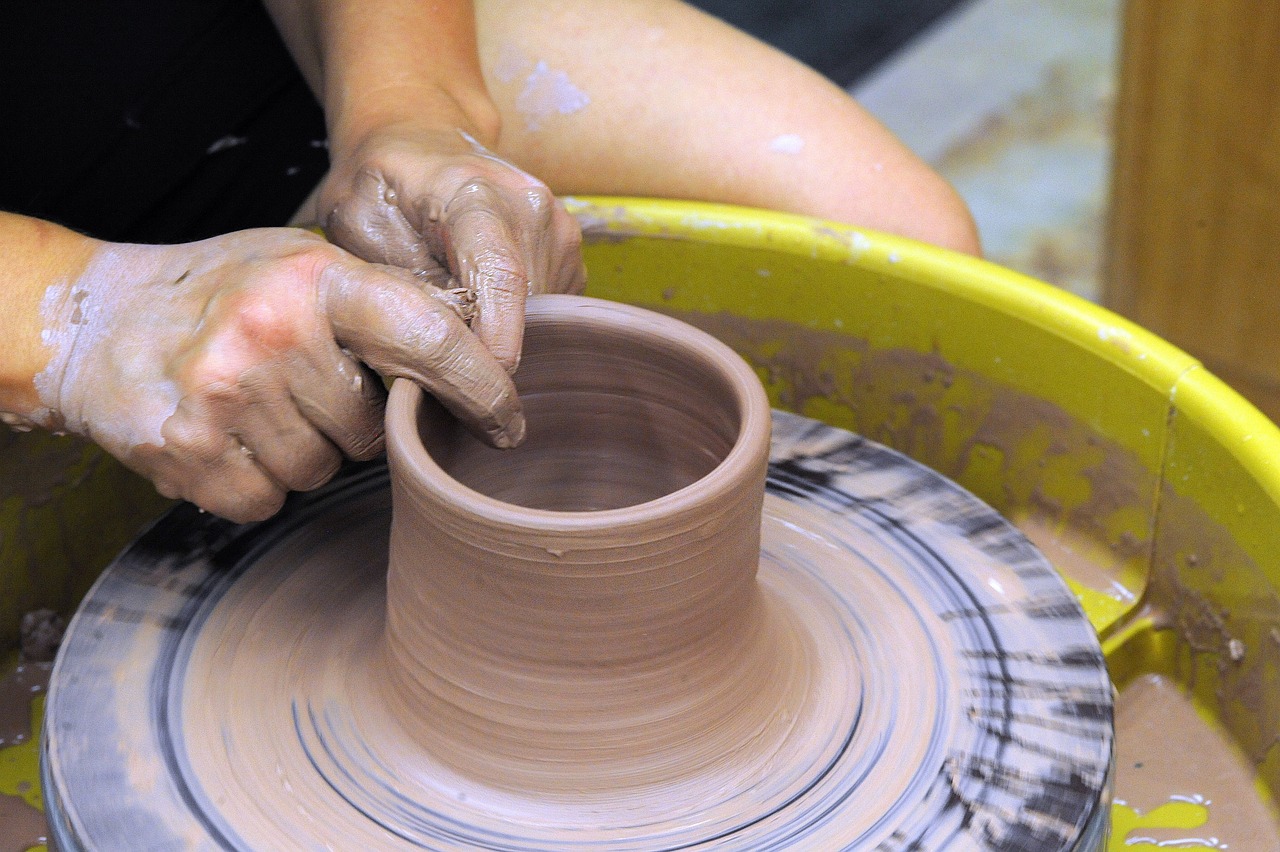
The Psychological Benefits of Pottery
Engaging in pottery is more than just a creative outlet; it’s a powerful tool for enhancing mental health. The act of molding clay allows individuals to immerse themselves in a therapeutic experience that can significantly reduce stress and anxiety. When you sit down at a pottery wheel or start shaping a lump of clay with your hands, you enter a world where your worries can momentarily fade away. This mindfulness promotes relaxation and helps you focus on the present moment, which is essential for emotional well-being.
Moreover, the tactile nature of clay provides a unique sensory experience that can be incredibly calming. The feeling of cool, soft clay between your fingers is not only soothing but also allows for a form of self-expression that words often fail to convey. As you knead, pinch, and shape the clay, you might find that your emotions begin to surface, allowing for a deeper understanding of what you’re feeling. This process of exploration can be a gateway to emotional healing, making pottery a valuable addition to any therapeutic practice.
One of the most profound psychological benefits of pottery is its ability to boost self-esteem. When you create a piece of pottery, whether it’s a simple bowl or an intricate vase, you produce something tangible that you can be proud of. This sense of accomplishment is critical, especially for individuals who may struggle with feelings of inadequacy. Each completed piece serves as a reminder that you are capable of creating beauty, which can foster a newfound confidence in your abilities.
Pottery also encourages individuals to embrace imperfections. In a world that often prioritizes perfection, working with clay offers a refreshing perspective. The very nature of pottery is that no two pieces are alike, and that’s what makes them unique. By learning to appreciate the beauty in flaws, individuals can cultivate a healthier mindset. This acceptance not only reduces anxiety but also allows for increased enjoyment in the creative process. Imagine approaching each piece not as a test of skill, but as an opportunity to express yourself authentically.
Working with clay teaches essential life skills such as patience and perseverance. Pottery is not always straightforward; it requires practice and dedication. As you learn to overcome challenges—like a piece collapsing or a glaze turning out differently than expected—you build emotional resilience. This newfound strength can translate into other areas of life, equipping you to handle obstacles with greater ease. It’s a reminder that, much like in pottery, life’s most beautiful creations often come from moments of struggle and learning.
Pottery classes and workshops provide a fantastic opportunity for social interaction. They create a space where individuals can come together, share their experiences, and support one another. Building relationships in such creative environments can contribute significantly to emotional well-being. The sense of community formed in these settings fosters a feeling of belonging, which is crucial for mental health. When you’re surrounded by others who share your passion, it’s easier to open up and connect on a deeper level.
In summary, the psychological benefits of pottery extend far beyond mere creative expression. From enhancing self-esteem to fostering social connections, pottery serves as a multifaceted tool for emotional healing and personal growth. It invites individuals to explore their feelings, embrace imperfections, and build resilience, all while enjoying the therapeutic process of working with clay.
- What is the main psychological benefit of pottery? Pottery helps reduce stress and anxiety while promoting mindfulness and relaxation.
- Can pottery improve self-esteem? Yes, creating tangible pieces boosts self-esteem and fosters a sense of accomplishment.
- How does pottery help in overcoming perfectionism? Pottery encourages individuals to embrace imperfections, leading to reduced anxiety and increased enjoyment in the creative process.
- Is pottery a social activity? Absolutely! Pottery classes and workshops foster social connections and a sense of community.

Enhancing Self-Esteem
Creating pottery is not just about molding clay into beautiful shapes; it’s a powerful tool for enhancing self-esteem. Imagine the feeling of your fingers sinking into soft, pliable clay, transforming it with every motion. As you shape your creation, you're not just crafting an object; you're building your confidence. Each piece you produce serves as a tangible reminder of your abilities, fueling a sense of accomplishment that can be hard to find in our fast-paced, digital world.
When individuals engage in pottery, they often experience a surge of pride as they see their work take form. This process of creation can be incredibly empowering. It allows you to express yourself in ways that words sometimes can’t capture. For many, the act of creating something from scratch can be a profound experience, leading to a boost in self-worth. Think of it as a journey where every lump of clay represents a challenge, and every finished piece symbolizes a victory.
Moreover, pottery encourages a mindset shift. Instead of striving for perfection, it invites you to embrace your unique style and imperfections. This is where the magic happens—when you let go of the need to be flawless, you open yourself up to exploration and experimentation. Pottery teaches us that beauty can be found in the irregularities and that each “mistake” can lead to unexpected and delightful results. This acceptance fosters a healthier self-image and encourages a more compassionate relationship with oneself.
In pottery classes, individuals often share their creations with peers, providing an opportunity for positive feedback and support. This communal aspect is vital; it reinforces the notion that you are not alone in your creative journey. As you receive compliments and encouragement from others, it can significantly enhance your self-esteem. You begin to see yourself not just as a creator but as part of a vibrant community that values your contributions.
Ultimately, the journey of working with clay is about more than just the finished product. It’s about the process, the lessons learned, and the self-discovery that occurs along the way. Engaging in pottery can help individuals redefine their self-worth, moving from a place of self-doubt to one of confidence and pride. So, if you’re looking for a way to boost your self-esteem, why not give pottery a try? You might just find that the clay holds more than just potential for art; it holds the key to unlocking your inner strength.
- How does pottery help with self-esteem? Pottery allows individuals to create tangible results, fostering a sense of accomplishment and pride.
- Can pottery be therapeutic? Yes, pottery is a form of art therapy that promotes emotional healing and self-discovery.
- What if I'm not good at pottery? Pottery is about the process, not perfection. Embracing imperfections can enhance your creative experience.
- Are pottery classes beneficial for social interaction? Absolutely! Pottery classes provide opportunities to connect with others, building a supportive community.
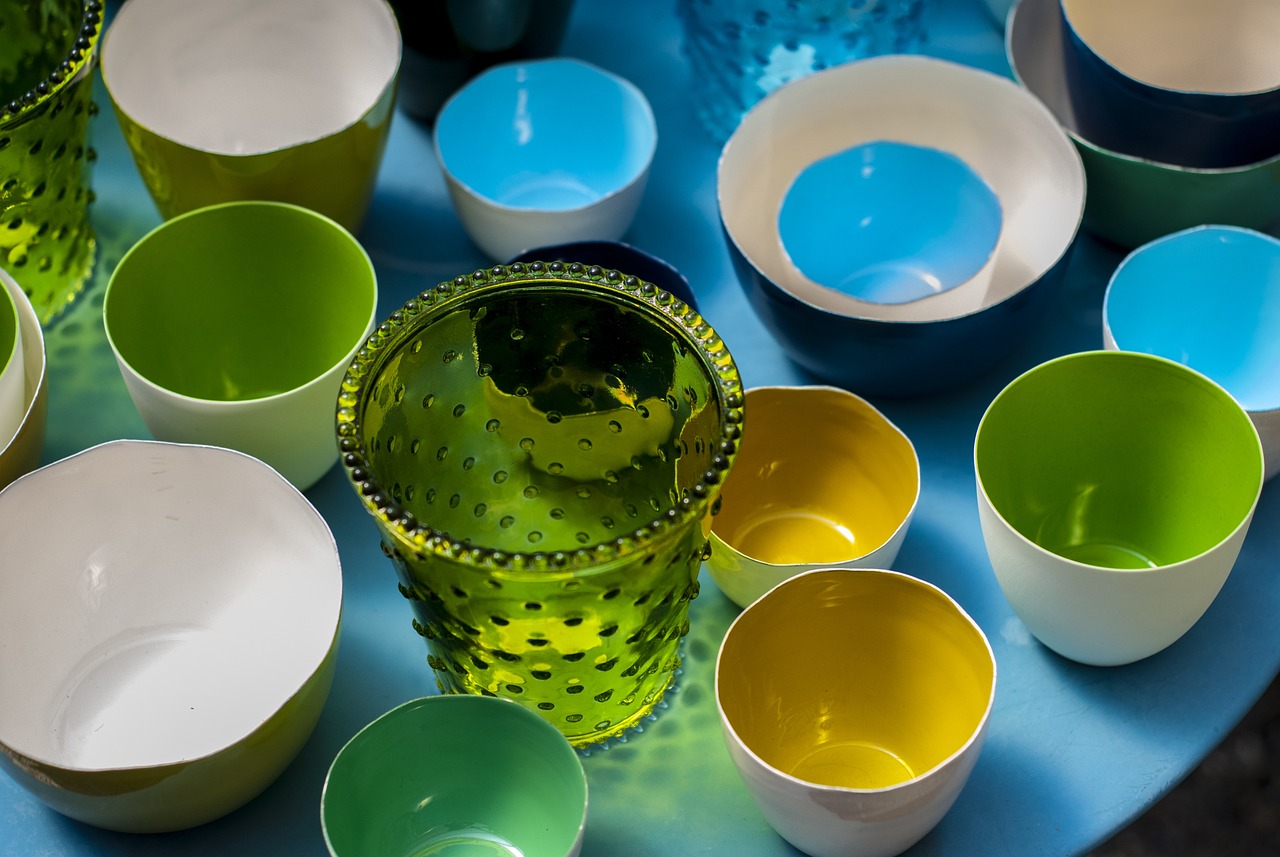
Overcoming Perfectionism
In today's fast-paced world, the pressure to achieve perfection can often feel overwhelming. Many individuals grapple with the relentless pursuit of flawlessness, which can lead to stress, anxiety, and a general sense of inadequacy. However, engaging in pottery offers a refreshing antidote to this perfectionist mindset. When you mold and shape clay, you quickly learn that the beauty of pottery lies not in its perfection but in its unique imperfections. Each piece tells a story, and those little quirks and irregularities are what make it truly special.
Imagine the first time you sit at a pottery wheel. As the clay spins, you might find yourself trying to create a perfectly symmetrical bowl. But as you work, you notice that the clay has a mind of its own, sometimes collapsing or shifting in unexpected ways. Instead of feeling frustrated, you start to embrace these moments. This is where the magic happens! You learn to appreciate the process rather than just the end result. Pottery teaches you that it's okay to let go of control and allow creativity to flow freely.
This acceptance of imperfection can be incredibly liberating. It encourages a healthier mindset where you can celebrate progress over perfection. By recognizing that mistakes are part of the journey, you begin to cultivate a more compassionate relationship with yourself. You might even find that the most beautiful pieces are those that didn’t turn out as planned, but instead reflect your unique artistic expression.
Moreover, pottery can serve as a metaphor for life itself. Just like a piece of clay, we are all shaped by our experiences, and those experiences often come with bumps and grooves. By embracing these imperfections, we build resilience and learn to navigate life's challenges with grace. This shift in perspective can significantly reduce anxiety and increase the enjoyment of the creative process.
In essence, pottery is not just about creating art; it's about fostering a mindset that values authenticity over perfection. It encourages individuals to step back, breathe, and appreciate the beauty in the 'messiness' of life. So, the next time you find yourself striving for perfection, remember that in the world of pottery—and indeed, in life—it's the imperfections that often shine the brightest.
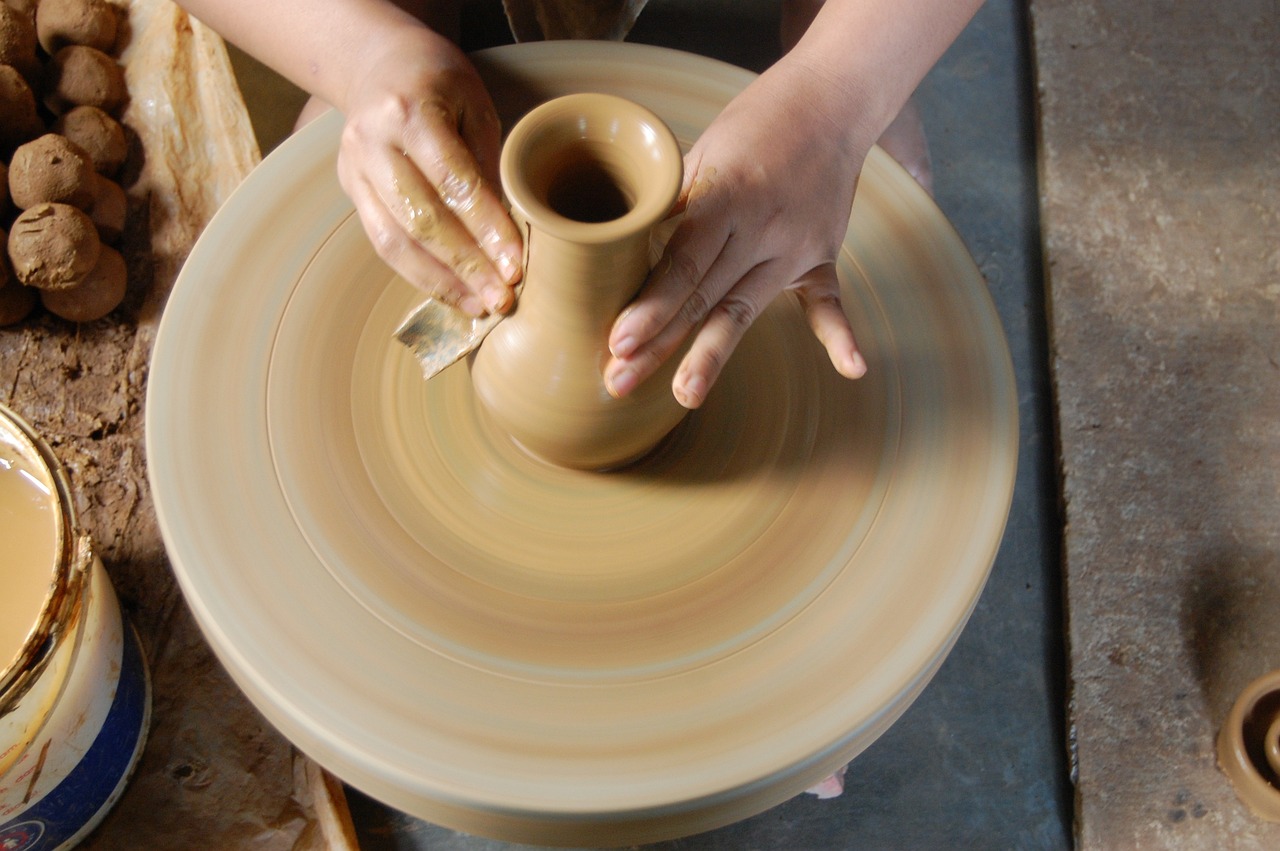
Building Resilience
Engaging with pottery is more than just a creative outlet; it's a powerful tool for . Life can be a rollercoaster, filled with ups and downs, and developing resilience is crucial for navigating through those challenging times. When you sit down with a lump of clay, you’re not just molding a piece of art; you’re also molding your ability to cope with adversity. The process of working with clay teaches patience and perseverance, two essential traits that can help you face life's obstacles head-on.
As you shape and refine your pottery, you encounter challenges—whether it's getting the clay to the right consistency or mastering a new technique. Each challenge presents an opportunity to learn and grow. Instead of shying away from difficulties, pottery encourages you to embrace them. This can be likened to life itself: just as clay requires time and effort to transform into something beautiful, so too do we need to invest in ourselves to overcome hardships. The act of creating something tangible provides a sense of accomplishment, reinforcing the idea that persistence pays off.
Moreover, pottery fosters a mindset where mistakes are not failures but rather stepping stones towards improvement. This shift in perspective is vital for resilience. When you accidentally create a piece that doesn't turn out as planned, instead of feeling defeated, you learn to view it as a learning experience. This acceptance of imperfection can translate into everyday life, where setbacks become less daunting and more manageable. You start to realize that just like in pottery, life is about the process, not just the end result.
In addition to the psychological benefits, the physical act of kneading and shaping clay can also serve as a form of stress relief. The repetitive motions can be meditative, allowing your mind to clear and your body to relax. This mindfulness in action contributes to emotional strength, making you more resilient in facing life’s challenges. The next time you find yourself overwhelmed, remember that the simple act of working with clay can help ground you and remind you of your inner strength.
Ultimately, building resilience through pottery is about creating a safe space for self-expression and growth. It’s about learning to navigate the highs and lows of life with grace and determination. So, grab that clay, let your hands get messy, and embrace the journey of resilience one pot at a time.
- What is the role of pottery in building resilience?
Pottery provides a creative outlet that teaches patience, perseverance, and acceptance of imperfection, all of which are essential for building resilience. - Can pottery help with anxiety?
Yes, engaging in pottery can promote mindfulness and relaxation, which can significantly reduce anxiety levels. - Do I need prior experience to benefit from pottery?
No, pottery is accessible to everyone, regardless of skill level. The focus is on the process, not the outcome. - How can I incorporate pottery into my therapy sessions?
Therapists can integrate pottery as a form of creative expression, allowing clients to explore emotions while engaging in a hands-on activity.

Fostering Social Connections
Engaging in pottery isn't just about molding clay; it's about building connections with others. When individuals participate in pottery classes or workshops, they find themselves in a nurturing environment that encourages collaboration and community. Imagine walking into a studio filled with the rich aroma of wet clay, surrounded by people who share a common interest in creativity. This setting naturally fosters conversations, friendships, and a sense of belonging that many crave.
Pottery classes often attract a diverse group of people, each bringing their own stories and experiences to the table. As participants work side by side, they share tips, techniques, and even personal anecdotes, creating a supportive atmosphere. This social interaction not only enhances the pottery experience but also helps individuals combat feelings of isolation and loneliness. The act of creating together can break down barriers and build lasting relationships.
Moreover, pottery workshops often involve group projects or collaborative pieces, which require communication and teamwork. This can lead to a sense of accomplishment that is shared among participants, further strengthening their bonds. As they navigate the ups and downs of the creative process together, they develop trust and understanding, which are essential components of any strong relationship.
In addition to fostering friendships, pottery can also serve as a platform for emotional support. Many individuals find solace in discussing their struggles and triumphs with their classmates, creating a safe space for vulnerability. This exchange of thoughts and feelings can be incredibly healing, as it reminds participants that they are not alone in their journeys. The community aspect of pottery can be a powerful tool for those looking to improve their emotional well-being.
In essence, the social connections formed through pottery are invaluable. They provide a sense of community and support that enhances the therapeutic benefits of the art form. Whether it’s sharing a laugh over a clay mishap or celebrating the completion of a piece, these interactions create memories that enrich lives. So, if you’re seeking not just a creative outlet but also a way to connect with others, pottery might just be the perfect fit for you.
- What are the benefits of pottery as a form of art therapy? Pottery offers psychological, emotional, and social benefits, including stress relief, improved self-esteem, and enhanced social connections.
- Can pottery help with anxiety? Yes, the tactile nature of working with clay can promote mindfulness and relaxation, reducing anxiety levels.
- How does pottery foster social connections? Participating in pottery classes creates opportunities for interaction, collaboration, and emotional support among individuals.
- Is prior experience required to start pottery? No, pottery classes are typically designed for all skill levels, making it accessible to beginners.

Physical Benefits of Pottery
Engaging in pottery is not just a creative outlet; it also brings a plethora of physical benefits that can enhance overall well-being. The act of molding and shaping clay involves a range of physical activities that stimulate various muscle groups, making it a form of exercise that is both enjoyable and therapeutic. When you sit at the pottery wheel or knead the clay with your hands, you are not just creating art; you are also engaging in a workout that promotes fine motor skills and improves hand-eye coordination.
One of the most significant physical benefits of pottery is its ability to improve dexterity. As you work with clay, your fingers and hands become more agile, allowing for greater control over movements. This enhanced dexterity is not only beneficial for pottery but can also translate into other daily activities, such as typing, playing musical instruments, or even cooking. Moreover, the repetitive motions involved in pottery can strengthen the muscles in your hands and arms, contributing to overall physical health.
The process of working with clay is akin to a form of mindfulness in motion. When you focus on the texture of the clay and the movements of your hands, you are practicing a form of meditation that allows you to be present in the moment. This mindfulness can lead to improved mental clarity and a reduction in negative thought patterns, which can have a positive impact on your physical health as well. The calming effect of pottery can lower stress levels, which is crucial because high stress can lead to various physical ailments.
Additionally, pottery can be particularly beneficial for individuals recovering from injuries or those looking to enhance their physical rehabilitation. The act of shaping clay can serve as a gentle form of therapy that promotes healing through movement. It can help improve grip strength and range of motion in the hands, making it an excellent choice for those undergoing physical therapy.
| Physical Benefits of Pottery | Description |
|---|---|
| Fine Motor Skills | Enhances coordination and precision in hand movements. |
| Dexterity | Improves agility and control of hand movements. |
| Strengthening Muscles | Builds strength in hands and arms through repetitive motions. |
| Mindfulness | Encourages focus on the present moment, reducing stress. |
In summary, pottery is not only a creative endeavor but also a beneficial physical activity that can enhance your dexterity, strength, and overall mental well-being. Whether you're a seasoned potter or a complete novice, the physical benefits of working with clay can contribute to a healthier lifestyle. So, why not pick up some clay and start molding your way to better health?
- What are the main physical benefits of pottery? Pottery improves fine motor skills, dexterity, muscle strength, and promotes mindfulness.
- Can pottery help with rehabilitation? Yes, pottery can aid in physical rehabilitation by improving grip strength and range of motion.
- Is pottery suitable for all ages? Absolutely! Pottery can be enjoyed by people of all ages and skill levels.
- How does pottery promote mindfulness? The tactile nature of clay and the focus required in shaping it encourages individuals to be present in the moment.
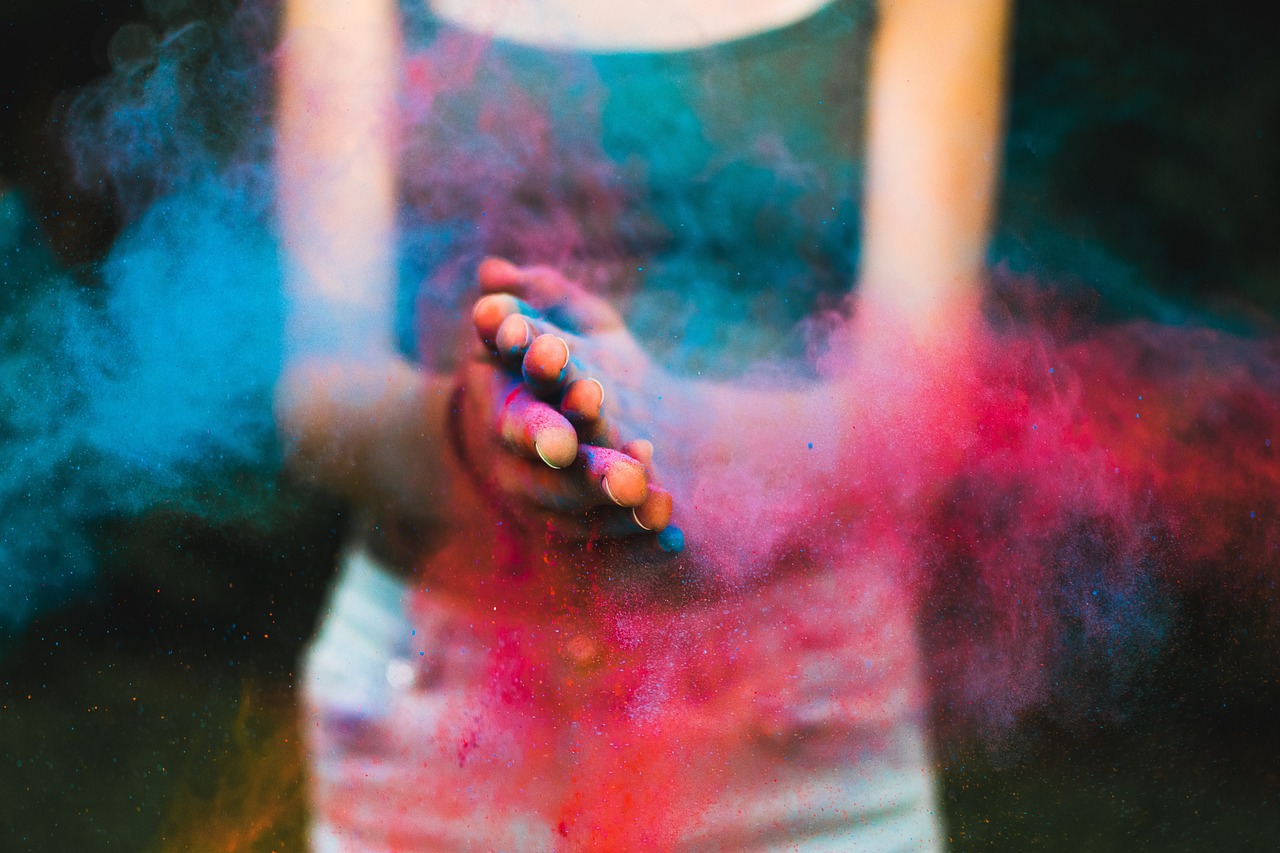
Mindfulness in Motion
Engaging in pottery is not just about creating beautiful objects; it’s a profound practice that encourages mindfulness in motion. When you sit at the pottery wheel or mold a piece of clay with your hands, you enter a state of flow that allows you to focus entirely on the moment. This immersive experience serves as a form of meditation, where the outside world fades away, and all that exists is you and the clay. It's like a dance between your mind and hands, where every twist and turn of the clay can evoke feelings of tranquility and presence.
The tactile nature of clay is inherently grounding. As you knead the clay, you can literally feel your stress and worries melting away. The sensation of the cool, soft material against your fingers draws your attention away from racing thoughts and redirects it to the present moment. In this way, pottery teaches you to appreciate the now, fostering a sense of peace that can be hard to find in our fast-paced lives.
Moreover, the process of shaping clay can lead to a deeper understanding of yourself. As you manipulate the material, you may find that certain emotions surface. Perhaps you feel frustration when the clay doesn't respond as you'd like, or maybe joy when you create something beautiful. These feelings are important indicators of your emotional state, and pottery provides a safe space to explore them. It’s a bit like having a conversation with yourself—one that helps you uncover hidden thoughts and feelings.
To further illustrate the benefits of mindfulness in pottery, consider the following aspects:
- Enhanced Focus: The concentration required to shape and mold clay helps sharpen your focus, making it easier to push aside distractions.
- Emotional Release: The physical act of working with clay can serve as a channel for expressing emotions that are hard to articulate.
- Stress Reduction: The repetitive motions and the sensory engagement can significantly lower stress levels, providing a calming effect.
In essence, pottery is more than just a hobby; it’s a therapeutic journey that connects your mind and body. It invites you to be present, to engage with your thoughts and feelings, and to find joy in the simple act of creation. Each piece you create is not just a reflection of your skill but a testament to your journey towards mindfulness and emotional healing.

Therapeutic Techniques in Pottery
When we think about pottery, we often picture beautiful vases or intricate bowls, but the therapeutic techniques involved in this art form go much deeper than aesthetics. Pottery is not just about creating; it’s about expressing emotions, processing experiences, and finding healing through tactile engagement. One of the most fascinating aspects of pottery therapy is how it can be tailored to fit individual needs, making it a versatile tool in therapeutic settings.
Two primary techniques are commonly used in pottery therapy: wheel throwing and hand-building. Each technique offers unique benefits and can cater to different emotional and psychological needs. Wheel throwing, for instance, allows individuals to experience the rhythm and flow of the wheel, which can be incredibly meditative. As the clay spins, it invites a sense of calmness and focus, helping to clear the mind of clutter and anxiety. This process encourages mindfulness, as artists must concentrate on their movements and the responsiveness of the clay.
On the other hand, hand-building techniques, such as pinch pots, coil building, and slab construction, provide a more intuitive approach to creating pottery. These methods allow individuals to engage with the clay in a more personal way, often leading to a deeper connection with their creations. For many, the act of molding and shaping clay with their hands can be a therapeutic release, offering a way to channel emotions that might be difficult to articulate verbally. The tactile nature of hand-building can also invoke feelings of nostalgia, reminding individuals of childhood play and creativity.
Moreover, pottery therapy can incorporate various therapeutic techniques that enhance the overall experience. For example, therapists may encourage participants to set intentions before beginning a project, allowing them to focus on specific emotions they wish to explore. This could be anything from feelings of joy to sadness, and the act of creating becomes a journey of self-discovery. Additionally, incorporating elements of mindfulness, such as deep breathing exercises before starting a session, can help ground individuals and prepare them for a more enriching experience.
To summarize, the therapeutic techniques in pottery offer a rich tapestry of possibilities for emotional exploration and healing. Whether through the rhythmic spinning of the wheel or the intimate touch of hand-building, pottery creates a unique space for individuals to connect with themselves and their feelings. By integrating these techniques into therapeutic practices, individuals can experience profound transformations, gaining not only artistic skills but also valuable insights into their emotional landscapes.
- What are the main benefits of pottery therapy? Pottery therapy offers psychological, emotional, and social benefits, including stress reduction, enhanced self-esteem, and improved social connections.
- Do I need prior pottery experience to participate in pottery therapy? No, pottery therapy is designed for individuals of all skill levels, including beginners.
- How does pottery help with emotional expression? The tactile nature of clay and the creative process involved in pottery allow individuals to express emotions that may be difficult to verbalize.

Integrating Pottery into Therapy
Integrating pottery into therapy is not just about molding clay; it’s about molding minds and hearts. Imagine walking into a therapy session where the usual couch is replaced with a potter's wheel and a mound of clay. This shift in environment can create a more relaxed atmosphere, enabling individuals to express themselves in ways that traditional talk therapy might not allow. Pottery serves as a powerful tool for emotional exploration, providing a unique blend of creativity and psychological support.
When therapists incorporate pottery into their practice, they open a doorway to deeper emotional connections. The act of shaping clay can mirror the process of shaping one’s thoughts and feelings. As individuals create, they often find themselves reflecting on their life experiences, leading to profound insights. This hands-on approach can serve as a catalyst for discussions about feelings, relationships, and personal challenges.
Moreover, pottery can be tailored to fit individual therapeutic needs. For instance, those struggling with anxiety may benefit from the repetitive motions involved in kneading clay, which can be incredibly soothing. On the other hand, individuals looking to enhance their self-esteem might find joy in creating functional pottery, such as bowls or mugs, that they can use in their daily lives. This tangible outcome provides a sense of accomplishment that can boost confidence.
Here are a few therapeutic techniques that can be integrated with pottery:
- Wheel Throwing: This technique requires focus and precision, encouraging mindfulness and concentration.
- Hand-Building: Allowing for more creative freedom, this method lets individuals express their emotions without the constraints of perfection.
- Glazing and Finishing: The final touches can symbolize personal growth and transformation, as each piece becomes a reflection of the creator’s journey.
Furthermore, pottery can foster a sense of community when practiced in group settings. Workshops and classes not only teach skills but also create a supportive environment where individuals can share their experiences. This social interaction is crucial for emotional well-being, as it helps combat feelings of isolation and loneliness. By engaging in pottery together, participants can build relationships and support networks, further enhancing their therapeutic experience.
In conclusion, integrating pottery into therapy transforms the therapeutic landscape. It empowers individuals to explore their emotions creatively while promoting healing and personal growth. The tactile nature of clay, combined with the therapeutic guidance of a trained professional, can lead to remarkable breakthroughs in emotional health. So, the next time you think of therapy, picture a potter's wheel spinning with potential, shaping not just clay, but lives.
Q: What types of pottery techniques are best for therapy?
A: Techniques like wheel throwing and hand-building are often used in therapy. Wheel throwing encourages focus and mindfulness, while hand-building allows for more creative expression.
Q: Can anyone participate in pottery therapy?
A: Yes! Pottery therapy is accessible to people of all skill levels. Whether you are a beginner or an experienced potter, the therapeutic benefits can be enjoyed by everyone.
Q: How does pottery help with anxiety?
A: The repetitive motions involved in working with clay can be calming and meditative, helping to reduce anxiety and promote relaxation.
Q: Is pottery therapy suitable for children?
A: Absolutely! Pottery can be a wonderful form of expression for children, helping them to articulate their feelings and develop fine motor skills.
Frequently Asked Questions
- What is art therapy?
Art therapy is a therapeutic approach that combines artistic expression with psychological support. It allows individuals to explore their emotions and experiences creatively, promoting self-discovery and emotional healing.
- How does pottery contribute to mental well-being?
Engaging in pottery can significantly reduce stress and anxiety. The tactile experience of working with clay promotes mindfulness and relaxation, helping individuals process their emotions and improve overall mental well-being.
- Can pottery help boost self-esteem?
Absolutely! Creating pottery provides a sense of accomplishment as individuals produce tangible results. This achievement fosters confidence and encourages personal growth, making it a fantastic way to enhance self-esteem.
- How does pottery address perfectionism?
Pottery encourages individuals to embrace imperfections, which can lead to a healthier mindset. By accepting that not everything needs to be perfect, participants often experience reduced anxiety and increased enjoyment in their creative process.
- In what ways can pottery foster social connections?
Participating in pottery classes and workshops creates opportunities for social interaction. These environments help individuals build relationships and support networks, contributing to emotional well-being and a sense of belonging.
- What physical benefits does pottery offer?
Pottery involves various physical activities that promote fine motor skills and hand-eye coordination. The hands-on approach improves dexterity and strengthens muscles, making it beneficial for physical health as well.
- How does pottery encourage mindfulness?
The act of shaping clay encourages individuals to focus on the present moment. This practice enhances mental clarity and helps reduce negative thought patterns, making it a powerful tool for mindfulness.
- What are some therapeutic techniques used in pottery?
Different pottery techniques, such as wheel throwing and hand-building, can be tailored to individual needs. These methods provide diverse ways to express emotions and explore creativity, making pottery a versatile therapeutic tool.
- How can pottery be integrated into traditional therapy?
Incorporating pottery into therapeutic practices can enhance traditional psychotherapy. This integration allows therapists to address emotional issues while facilitating creative expression through clay manipulation, enriching the overall therapeutic experience.



















